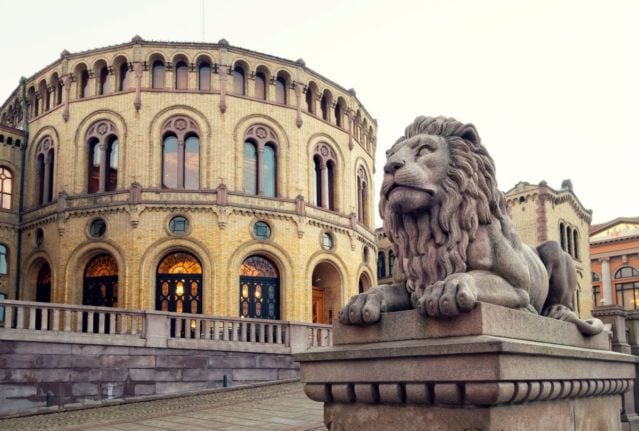Residents of Norway have several reasons to look forward to a brighter and more financially secure 2024.
While most of them aren’t set in stone, experts generally agree that there’s a high chance that these developments will materialise as the year progresses.
READ MORE: What will happen to Norway’s economy in 2024?
Looking forward to 2024, there’s reason to be hopeful. A stronger krone, lower interest rates, robust wage increases, and childcare becoming easier on the wallet all contribute to an optimistic outlook.
The krone could strengthen
While currency markets are notoriously unpredictable, there is hope that the Norwegian krone might strengthen in 2024.
READ MORE: Will the weak Norwegian krone recover in 2024?
Dane Cekov, a currency strategist at Nordea, recently told The Local that, although uncertainty persists, a less weak krone is possible this year – especially if interest rates decline internationally due to low inflation.
“When it comes to growth drivers, in the best case, inflation abroad will continue to come down, and central banks in Europe, the US, and abroad will reduce their rates, global activity will pick up, as will energy prices, and that would be good for the krone,” Cekov said.
With a stronger krone, consumers can enjoy a higher standard of living and have more buying power for a number of foreign products, which can range from electronics to vacations abroad.
The Norwegian krone has strengthened since December 2023, when the Norwegian central bank announced an interest rate increase. High oil and gas prices have also helped the krone recently.
The krone was around 50 øre stronger against the euro at the beginning of 2024 when compared to December 2023.
Interest rates – and inflation – might fall
After a year marked by sharp interest rate hikes in Norway and Europe, lower interest rates could be on the horizon – albeit not in the first half of the year.
Norway’s largest banks have said they anticipate a gradual decline in interest rates towards the end of 2024.
While the Norwegian central bank, Norges Bank, surprised many financial analysts by raising interest rates to 4.5 percent in December, it also acknowledged that the economy is cooling down.
While the central bank may maintain this rate until inflation is closer to the 2 percent target (that is, for some time to come), the bank may start reducing its key interest rates even earlier, as inflation subsides.
It also means that it will become easier to obtain a mortgage. This is because applicants have their finances stress tested against increases. The lower the rates, the easier the threshold to obtain a mortgage.
Cheaper loan and mortgage repayments
With potential interest rate reductions towards Christmas 2024, loan and mortgage repayments could become more affordable.
While the rate cuts are not imminent, they offer hope for homeowners in Norway who have been struggling to make mortgage repayments amidst higher interest rates and the cost of living crisis.
For families and people worried about their finances throughout 2023, the potential for reduced interest rates would mean some relief, as it could translate into lower monthly mortgage payments, which, in turn, would free up valuable funds that could be redirected towards other expenses or savings.
Strong wage increases expected
The Norwegian state budget for 2024 predicts annual wage growth of 4.9 percent – a substantial increase in the income of the country’s workforce.
In August, there were varying expectations regarding wage growth for the year ahead. Employee organisations foresaw a wage growth rate of 5.4 percent, underscoring their confidence in the ability of the labour force to negotiate favourable terms.
Meanwhile, employer organisations estimated a slightly lower wage growth rate of 4.6 percent.
The prospect of strong wage increases bodes well for disposable income, as it directly affects how much money people take home after taxes and expenses.
With more substantial paychecks, people can improve their quality of life, save for the future, and invest in homeownership, education, and much more.
However, the actual impact of wage increases on disposable income is not solely determined by the percentage growth in wages. It is also dependent on the rate of inflation.
If the cost of living increases at a rate similar to or lower than wage growth, people will experience a real increase in their purchasing power. In contrast, if inflation outpaces wage growth, the improvement in disposable income may be negated by rising prices.
Kindergarten becomes more affordable
Starting in August 2024, parents in Norway can look forward to reduced childcare expenses.
READ MORE: What will be cheaper and more expensive in Norway in 2024?
The maximum price for a kindergarten place, excluding food and additional costs, will be lowered to 2,000 kroner per month.
This change can save families up to 12,000 kroner per year and applies to both private and public kindergartens.
This move also supports working parents by reducing one of the significant barriers to employment: the high cost of childcare in Norway.
With more affordable options available, parents may find it easier to return to or remain in the workforce.



 Please whitelist us to continue reading.
Please whitelist us to continue reading.
Member comments